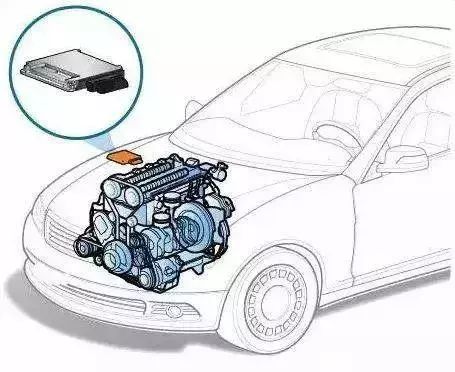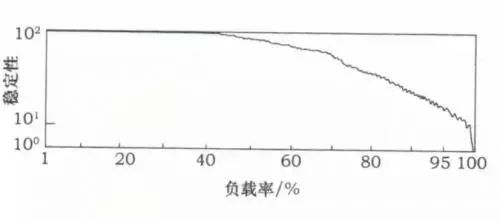What Is an ECU?
ECU, or Electronic Control Unit, also known as the “onboard computer”, is essentially a microcontroller for automobiles. It is composed of a microprocessor, memory, input/output interfaces, analog-to-digital converters, and other large-scale integrated circuits, similar to a regular computer. In simple terms, the ECU is the “brain” of the car.
It is easily recognizable by its appearance—in the electronic fuel injection system of the engine, there is a control component that resembles a square box, which is the ECU. The component has many fine slots around it to connect numerous input and output circuits, working together with other electronic control components to form the central nervous system of the car, constantly monitoring various input data (such as braking, shifting, etc.) and the car’s operating states (acceleration, skidding, fuel consumption, etc.), and calculating the information sent by various sensors according to a pre-designed program. After processing, it sends various parameters to the relevant actuators to execute various predetermined control functions.

Working Principle
The voltage operating range of the ECU is generally between 6.5-16V (with a voltage regulator at critical internal points), the operating current is between 0.015-0.1A, and the operating temperature ranges from -40℃ to 80℃. It can withstand vibrations below 1000Hz, so the probability of ECU damage is very low. The CPU in the ECU is the core part, which has calculation and control functions. When the engine is running, it collects signals from various sensors, performs calculations, and converts the results into control signals to regulate the operation of the controlled objects. It also controls the memory (ROM/FLASH/EEPROM, RAM), input/output interfaces (I/O), and other external circuits; the program stored in the ROM is based on data obtained through precise calculations and extensive experiments. This inherent program continuously compares and calculates the signals from the collected sensors while the engine operates. The results of these comparisons and calculations are used to control multiple parameters of the engine, such as ignition timing, air-fuel ratio, idle speed, and exhaust gas recirculation.
Analysis of Bus Load Rate Impact on Transmission Stability
As driving performance and safety levels continue to improve, the precision requirements for signals collected and executed by various electronic control systems have increased, leading to a growing amount of information exchanged between ECUs, with message counts constantly increasing and loads continuously rising. Generally, to ensure that the transmission delay of low-priority messages remains within an acceptable time frame, the bus utilization should not exceed 30%. When the load rate exceeds 38% to 40%, stability begins to degrade, and when it exceeds 55%, there are risks affecting drivability and safety. When it exceeds 65%, stability degradation accelerates, and when it surpasses 98%, the network becomes overloaded, as shown in Figure 2.

Is It Necessary for the CAN Bus Load Rate to Be Below 30%?
The CAN bus load rate does not necessarily have to be below 30%. Based on experience, the load rate should be kept below 50%. With a well-developed network management strategy, the segment load rate should not exceed 70%. Of course, the lower the load rate, the better the real-time performance, but if the load rate is too low, there won’t be enough data transmitted, which is a problem with CAN when there is a large amount of data, making it impossible to guarantee real-time performance. Generally, a load rate of around 30% is considered optimal.

How to Determine If the Car ECU Is Malfunctioning
In general, if the computer is not functioning, you cannot access it.
Before repairing the ECU, several key points must be noted:
(1) Carefully check the external circuit to eliminate external circuit faults, and confirm that the external circuit is normal before proceeding with ECU repairs;
(2) Check for any signs of damage to the ECU’s exterior, ensure it is securely fastened, and that soldering (or adhesive) is sealed reliably;
(3) Check the connection status of the wires, especially the power and ground wires;
(4) Confirm the ECU model used in the system.


